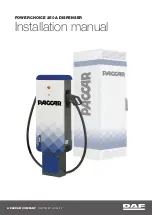
E n g i n e Bravo-Brava ft**
Fuel system
10.
EMISSION CONTROL DEVICES
The devices used have two objectives:
- to keep down the pollutant substances present in the exhaust, via the catalytic silencer;
- to eliminate the dispersion towards the outside of the unburnt hydrocarbons, via the (fuel) anti-evap-
oration system and the (lubrication) oil vapour recirculation system.
CATALYTIC SILENCER
The catalytic silencer is a device which makes it possible to simultaneously keep down the three main
pollutant compounds present in the exhaust: unburnt hydrocarbons ( H C ) , carbon monoxide (CO) and
nitrogen oxide (NOx).
Two types of chemical reaction take place inside the catalyzer:
- oxidation of the CO and the HC, converted into carbon dioxide
(CO2)
and water
(H2O);
- reduction of the NOx, converted into Nitrogen
(N2).
These reactions can take place in extremely short periods of time thanks to the presence inside the cat-
alyzer structure (ceramic support) of a layer of active substances (platinum and rhodium) which greatly
accelerate the conversion speed of the harmful substances.
The effectiveness of this conversion process is conditioned by the fact that the mixture strength at which
the engine operates is constantly oscillating around the stoichiometric value, which is achieved thanks
to the feed-back control carried out by the control unit on the basis of the Lambda sensor signals.
Lastly, the conversion processes are activated at temperatures in excess of 300 - 350°C: it is therefore vi-
tal that the catalyzer reaches this temperature as soon as possible in order to work properly.
1. Ceramic monolith
2. Metal support
3. Steel outer casing
When it is necessary to operate near the catalytic silencer, it is necessary to leave the vehicle to
rest for some time, since the (internal) operating temperature of the catalyzer is between 500
and 850°C.
There are basically two causes of the destruction of the inside of the catalyzer:
- the presence of lead in the fuel which lowers the degree of conversion at levels of practically
nil ("lead poisoning") and which also irreparably damages the Lambda sensor;
- the presence of totally unburnt fuel in the exhaust gases, due to failed ignition, which causes
an increase in the temperature which involves the fusion of the ceramic support. As a result,
the connector for the coils should never be disconnected with the engine running: in the case
of tests, the silencer should be replaced first with an equivalent section of pipe.
40
Print no. 506.670
Содержание 1995 Brava
Страница 20: ......
Страница 56: ...Technical data Gearbox and differential 00 21 27 Bravo Brava 48 Print no 506 670 70...
Страница 58: ...Technical data Gearbox and differential 00 21 27 Bravo Brava 50 Print no 506 670...
Страница 100: ......
Страница 101: ...Untitled Document Removing Refitting file D Volume 201 engine htm08 07 2006 16 06 14...
Страница 232: ...2 CQ 5 C Q E E c L U i f 2 a Z 5 ui o 1 o...
Страница 281: ......
Страница 350: ......
Страница 365: ...Engine Bravo Fuel system 10 WIRING DIAGRAM SHOWING INJECTION IGNITION SYSTEM P4A14FJ01 14 Print no 506 670...
Страница 397: ......
Страница 418: ...t...
Страница 435: ...Braking system Bravo Brava ftiavft ft Rear brakes 33 sheath from the brake backplate 16 Publication no 506 670...
Страница 441: ...Braking system Bravo i g j j u o v...
Страница 455: ......
Страница 461: ...Bravo Brava Braking system Anti lock braking system 33 P4A05AD02 Copyright Fiat Auto 5...
Страница 515: ...Bravo Brava DIAGRAM OF FRONT SUSPENSION ASSEMBLY Suspension and wheels Front suspension 4 4 Copyright Fiat Auto 1...
Страница 517: ...Bravo Brava Suspension and wheels Front suspension 44 P4A003G02 Copyright Fiat Auto 3...
Страница 523: ...Bravo Brava Suspension and wheels Front suspension P4A009G05 Copyright Fiat Auto 9...
Страница 532: ...Suspension and wheels Bravo Brava Rear suspension 44 1 8 Publication no 506 670...
Страница 534: ...Suspension and wheels Bravo Brava Rear suspension 44 P4A020G05 P4A020G04 20 Publication no 506 670...
















































